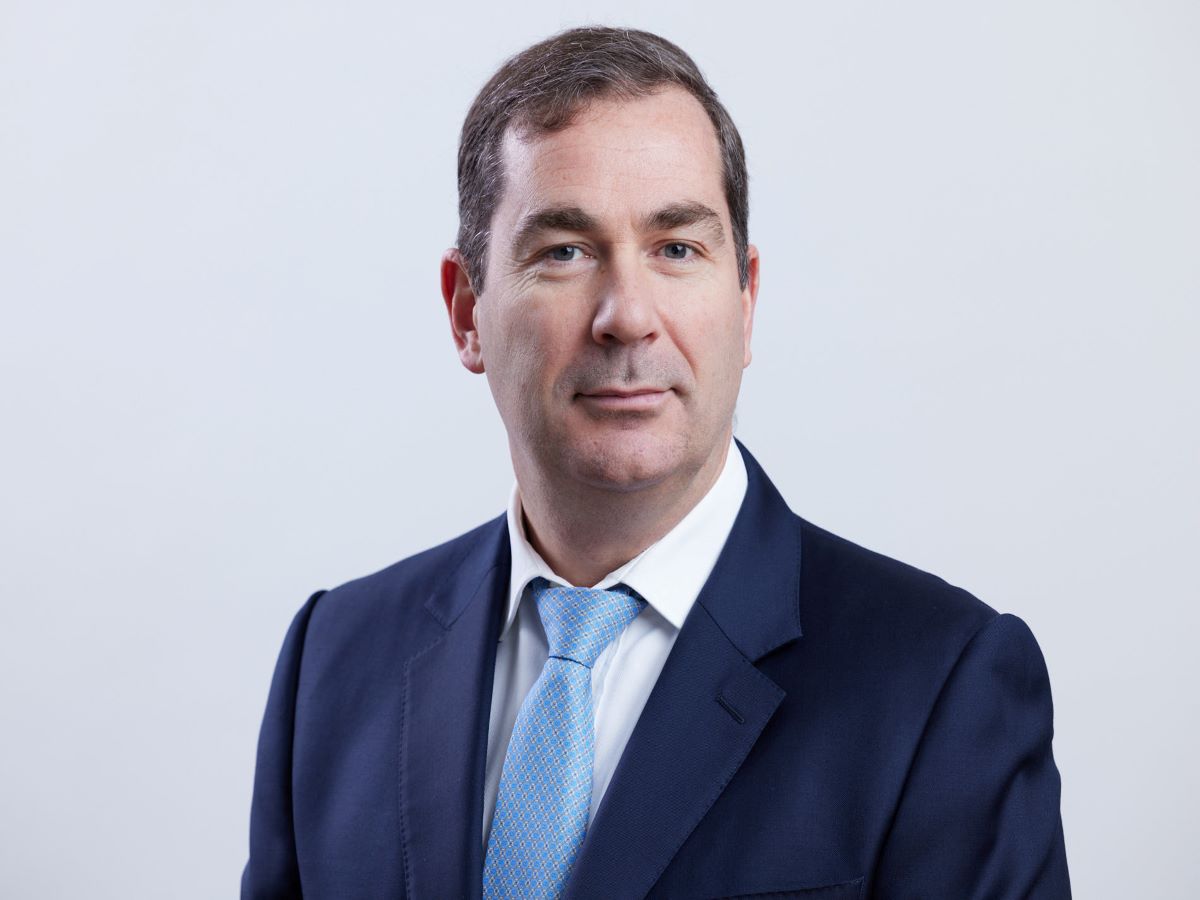Can you run us through what your LDI strategy looks like?
More than 50% of our assets are dedicated to our LDI strategy. We hold about 40% in government bonds, we also hold 12% in hybrid assets, effectively corporate bonds, where we use the duration of these in our LDI strategy. We also have about 8% in cash. In total we have a 140% funding level and within our LDI strategy, about 75% to 80% is funded.
We don’t run our LDI strategy in a particularly highly leveraged way, in fact, our gearing on this strategy is nearly as low as it has ever been. Over the last year there has been a high expectation that interest rates are going to rise, there have been inflationary pressures, the war and central banks are now trying to unwind their balance sheets, it has been pretty well telegraphed that rates were going to go up.
But the sharpness of the move is what caught people out and they were probably not being as prepared as they should have been in order to satisfy all the collateral calls. Unlike a lot of the things that have been reported, pension funds don’t have an asset problem, they had a problem with assets not being in the right place to meet collateral calls.
Having gone through 15 years of low volatility, a lot of the stress tests that were being conducted to establish the collateral you would need were being done with the volatility of the last 15 years in mind. But when you get back to normalised markets, the volatility should be higher because QE has dampened down volatility and when you unwind QE you could argue that it should go back to normal. It probably should be higher than normal because more bonds are going to come to the market.
We are agnostic on interest rates and inflation because we are 100% hedged on the LDI side, where it is more impactful on the asset side in terms of how we position our portfolio.
When you say you are a 100% hedged, how do you do that without using leverage, are you using linkers?
The inflation we hedge using swaps, but given our cap of 2.5% in CPI, our exposure to inflation is significantly lower than interest rates. But the real stress in the market is interest rates, it’s not in inflation. We’re capped at CPI plus 2.5 so when you’ve got future expectations quite high most of our exposure is nominal. But you are right, most of the gearing we do have will be through the interest rate market not the inflation market.
LDI is a very broad term, it can be funded or part funded. Insurance companies have been doing LDI for the past 40 years. It is really the design of individual programmes that is the problem. And in this type of environment the levered strategies are not helpful.
Did you have lower levels of leverage because you were anticipating gilt yields to rise or because your funding ratio is good anyway?
It was more because we have a waterfall of liquid assets depending on how quickly rates move if we get into distressed situations. One of the main reasons that we introduced the cash allocations is because we knew there was going to be more clearing going on. We put that portfolio in place in 2016, so quite a long time ago, but we are very proactive in terms of how we’re looking at leverage.
The benefit that we have is that we can look at this on a day-to-day basis so we see what’s coming and react accordingly. But all the prior planning of our framework, as much as the markets are moving, in terms of our collateral position, it worked exactly how we expected it to move. Apart from the fact that it is never good to see markets being dysfunctional.
My biggest concern with interest rates rising is that there are implications for other assets, not just our LDI portfolio. It could have implications for the valuation of other asset classes. So we will look at the way that we continue to evolve our asset allocation over time. Fixed income related products have not been particularly exciting to buy over the last 15 years. The unwinding of central bank’s balance sheets makes fixed income more attractive in value terms and now features more prominently into your asset allocation, whereas it wouldn’t have been in previous years.
Given our high cash allocation and defensive position, we have managed to add more fixed income from a value perspective in the recent stress situation. From a total return perspective, not from an LDI strategy. Because these assets look cheaper than they have done for an awful long period of time. If we are coming up to an impending recession, then high-grade short-dated fixed income assets look particularly attractive. You can get 6-7% from that. Do you think that you are going to get 6-7% from equities? Maybe, but not with the respective risk profile.
That is quite a luxurious position to be in, compared to smaller schemes in pooled LDI strategies which are struggling to raise cash right now.
Maybe, but if you think about our investment mandate, when these crises happen, part of our job is to ensure that we are able to act on opportunities that exist in the market in times of stress. Part of the job here is that you can follow up on these opportunities.
A lot of smaller pension schemes are selling corporate bonds at the moment to raise cash, so you might be profiting from that. Do you see that valuations have become more attractive over the last couple of weeks?
It would be unkind to suggest that we are profiting from other people’s misery. And I don’t think we’re the only ones buying to be honest, somebody has got to pick them up. And we’ve been running a lower risk. As you know from our past chat, we’ve got a strategic risk budget, we’ve expected risky assets to fall for some time. Purely on the basis that when opportunities come up, we’ve got cash to deploy. At the end of the day, we’ve got two sides of the balance sheet. We want to protect the LDI portfolio and make sure it’s robust, but the other side is to try and invest our money in the least risky way possible to make sure we’re delivering on returns for our members.
The last time we spoke was in Spring 2020 and you were saying that you were able to buy corporate credit at quite attractive rates because you were holding cash.
Yes, that was more US credit that we bought at that point rather than UK, but the situation always evolves where you try to position for the macroeconomic environment. I’m not going to tell you anything you don’t already know. Everybody is expecting a recession to come. Everybody is not necessarily positioned for that, you’ve got to evolve a bit. To be honest, last time we spoke in Spring 2020, yes, we bought a lot of credit and did well out of it but if we had bought equities we would have done better. We tried our best but that doesn’t mean we couldn’t have done better. The challenge is always to find the opportunities and invest accordingly.
The more we can invest in these structural changes in the market, the more we can reduce the risks of our reserves. We try to grow our reserves but the higher returns we can take at a lower level of risk then that’s the Holy Grail isn’t it?
Don’t get me wrong, we are very concerned about disfunction in markets. Don’t think that this wasn’t a stressful event for us, trying to navigate through dysfunctional markets is uncomfortable, as we trade in these markets every day.
And there is another side to it which is, what do we do on the back of it? Do we sit on our hands or do we try to maximise our position? We’ve got 30 people on our investment team and they have a mandate to fulfil.
What was it like on that Tuesday when the Bank of England first had to intervene? I would have loved to be a fly in the wall.
The day before the mini budget, long nominal rates rose by 20 basis points. The market was becoming dysfunctional before the mini-budget, however the additional fiscal easing was the straw that broke the camel’s back.
It’s been building up hasn’t it?
Then they rose 30 basis points after the mini budget and on Tuesday it went ridiculous that was when the Bank intervened. Each of these days were the biggest movement in rates in history. Each of. And to think that we’ve gone through the financial crisis, we’ve gone through the pandemic and none of these situations resulted in the movements we’ve seen last week.
Were you considering increasing levels of cash or are you doing that now?
We also need to sleep at night. That is why we’ve got a very large gilt holding. We’ve got around £10bn in gilts, then we’ve got between £2.5bn to £3bn in cash and ultimately when we are paying collateral, we can do either of the two things. We can either repo some of the government bonds that we have into cash and pay that over as collateral or use the cash that we have on balance sheet in order to do that.
We use all the tools available to us to manage the cash needs for collateral requirements. We can use the repo market, to raise cash and that market continued to function well. Had that market not been functioning we would have used our large cash balances. So we use all the tools, but we’ve also got a very professional team that looks out for what the efficiencies in the LDI market are.
With the amount of collateral we have set aside in our LDI programmes, we would need to have several percentage point rises in long-term rates for us to even get slightly worried about how much collateral we’ve got. We obviously have a high level of reserves, so in the extreme we could sell assets to try and reduce the level of leverage in the LDI programme but we are not in that position.
Why have some schemes not reduced their leverage earlier? We all could have seen this crisis coming?
If you are running these programmes, the most important thing is to ensure that you’ve got enough cash collateral. And if you go through the year, let’s say December till pre-mini budget, interest rates have gone up consistently throughout the year. The amount of cash collateral that was drawn from us between January and mid-September, over nine months is exactly the same as was drawn in the two days prior to the mini-Budget and the two days after. The sharpness of the move is what caused people problems. Generally, what you would expect is that as rates rise higher, you continue to rebalance your portfolio in order to have enough cash collateral. But when it moves a 150 basis points in 2-3 days, that’s a hell of a lot of stress in such a short period of time.
The Bank of England rightly said that one of the reasons it intervened is because of the forced selling of assets to keep hedges and pay collateral. And that’s true. You’ve got on the one side someone like us running a £35bn fund with a 30 person strong investment team that are here every day, trying to manage the portfolio and understand what’s going on in real time.
Compare that to a typical medium-sized DB plan where trustees meet 4 times a year. Then they have a consultant and mandates with different asset managers. The point with the stress in the market, they may have last met 2.5 months ago. And long-end 30 year rates were less than 1% last year, now they are 4-5%. It’s changed quite a bit. The governance structure of these pension schemes isn’t flexible enough to make decisions like that in real time. We are lucky that we’ve got a big pool of money and a decent size investment team. I don’t think the typical pension scheme has that – that’s what has caused some of this stress.
At the end of the day, the Bank of England are talking about QT and then the government comes up with additional borrowing, so there is debt on debt on debt. That is the reason why there is a supply and demand problem.
Speaking of QT, these asset sales that the Bank of England is doing are indemnified by HMRC so more debt could come to market when the government has to cover the losses of QT gilt sales.
Yes, that is right, and the higher rates go, the more the government has to borrow to pay the mark to market.
So the Bank of England has managed to keep things in check with a £65bn commitment but that ends now, could we see a repeat of the crisis?
Am I worried that the stress we recently had in markets will happen again? Yes. Because I don’t think two weeks is enough for pensions schemes to sort their issues. The Bank of England hasn’t bought that many bonds and they really haven’t cleared the problem and they’ve got this raft of issues coming down the pipe. You’ve got real money investors like ourselves and people who buy for hedging purposes and that’s fine. But through the years, some of the schemes have taken their hedging ratios quite high. You can’t just expect the pension fund community to come in and buy everything, there is a lot of issuance.
There is around £100bln net issuance to be issued this fiscal year, on top of that you’ve got QT which works out to be around 10bn a quarter, that’s a lot of bonds to go down the pipe and if there aren’t any buyers then yields will re-price accordingly.
As you mentioned, the higher the rates go, the more impact it has on the government’s finances. The demand supply imbalance that we had previously whereby pension schemes that didn’t have a huge amount of hedging has increased that through time. We are now in a situation whereby it is not obvious to me, especially with the leverage, that the minute these funds start adding hedges to the programme, certainly in an unfunded fashion, there a lot of challenges arising. How much can the government borrow and how much can the DMO [Debt Management Office] and the Bank of England satisfy? This is not won and done in terms of market stress, I do worry about the demand supply dynamics.
What steps will schemes take now and can they do it at this pace?
You never want to be a forced seller of assets to maintain your hedges, that is not ideal for anybody. Every scheme is different, has a different asset mix and funding level. What needs to happen now is that the schemes, consultants and asset managers that run the funds have got to be a bit more realistic in their stress test scenarios to determine how much collateral they need to run these programmes. What will probably happen is that there is a little bit more reticence to increase leverage which stops hedging which in turn stops people buying duration. But that also lowers demands for the instruments.
There is nothing here from the Bank of England that addresses the structural supply and demand issues coming down the pipeline. It is difficult to say what is going to happen to rates, but I don’t think the long-end has an equilibrium point whereby demand and supply for bonds are matched up. You’ve seen it. When the Bank of England stepped in, yields bottomed at 3.60, and as we speak the BoE program is still on going and they have made it back to more than 5% again.
The Bank of England probably thinks that it is giving pension funds some of the bandwidth to sort out some of the issues, and that will assist the market. I think there is a degree of truth in that, I just don’t think that is the only concern. There is a bigger structural issue here.





Comments